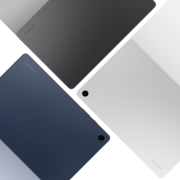OnePlus unveiled a new concept phone today, giving us a look at what its engineers are playing with and what technologies may be heading to our smartphones in the future.
Last year’s concept smartphone from Oneplus featured a tint-shifting glass that allowed the cameras on the back of the phone to magically disappear when the camera wasn’t being used. The technology still hasn’t made its way into any production-ready smartphones that we know of, but it’s still an intriguing innovation that seems to have plenty of applications.
This time around, OnePlus engineers have incorporated two new technologies into its concept smartphone, allowing the glass panel on the back of that phone to change colors and giving the device motion-sensing technology that allows it to sense gestures and the environment around it, similar to Google’s Soli-based Motion Sense feature that was introduced in the Pixel 4.
The phone’s color changing technology sounds like it may be quite practical to implement in future smartphones, allowing the phone to shift color from dark blue to silver to show incoming notifications or interact with other functions on the device.
For the 8T ECMF, that ECMF has taken the form of a color-changing film that contains metal oxide in glass, the valence state of the metal ions varying under different voltages. That means that when the metal oxide activates, the color of the glass changes from a dark blue to a light silver.
The Reactive Sensing technology OnePlus is showing off in its concept device uses mmWave technology to act as a data system for the phone, allowing it to sense objects and motion in its immediate surroundings.
The ECMF design becomes truly interactive by working in combination with mmWave, and changes the way we interact with our technology. The working principle behind this technology, borrowed from 5G, is that the mmWave radar module transmits and receives electromagnetic waves. When receiving electromagnetic waves, the digital signal processing (DSP) and CPU perform signal and information processing, allowing the device to perceive, image, locate, and track objects.
While these two new technologies are likely a few years away from being implemented in any upcoming smartphones from OnePlus, they both appear to be feasible and beneficial for consumers. The Reactive Sensing technology using a mmWave radar module would essentially replicate Google’s Motion Sense radar technology to control various functions on the phone.
If Reactive Sensing is more reliable and isn’t limited in its operation based on the phone’s orientation, I’d definitely like to see it incorporated in a future OnePlus device.











Comments